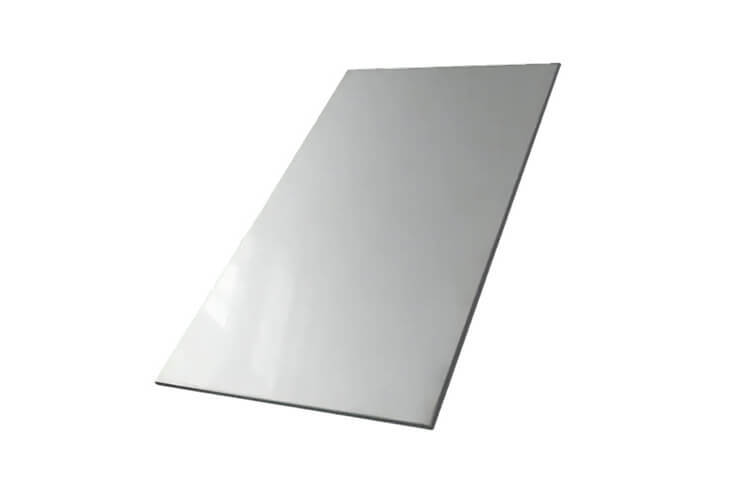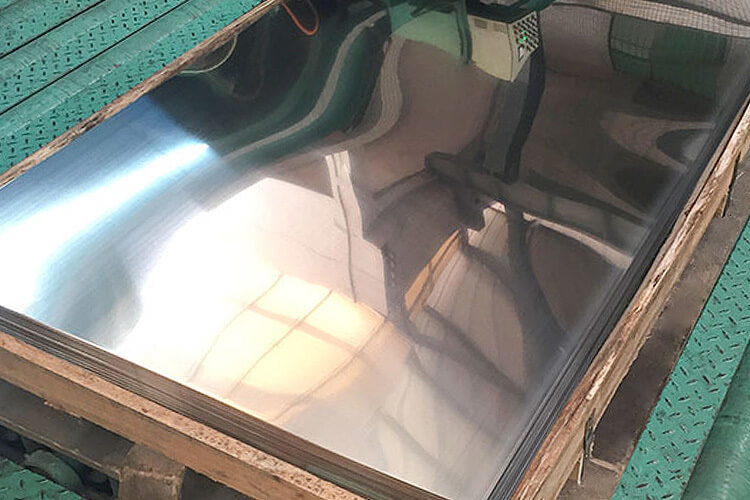Application of Surface-Treated 304 Stainless Steel Plates
Jan 24,2025
304 stainless steel is one of the most versatile and widely used alloys in various industries. Known for its excellent corrosion resistance, formability, and strength, it has long been a staple material in everything from kitchen appliances to medical devices. However, the surface treatment process can further enhance its properties, making it even more suitable for specialized applications. In this blog post, we will explore the different surface treatment processes for 304 stainless steel plates and their applications.

What Is 304 Stainless Steel?
304 stainless steel is an austenitic stainless steel alloy primarily made up of iron, chromium (18%), and nickel (8%). These elements give the alloy superior corrosion resistance, making it ideal for environments exposed to moisture, chemicals, or high temperatures. It's also highly resistant to oxidation and staining, a feature that ensures longevity and minimal maintenance.
While 304 stainless steel has numerous inherent properties, surface treatments can further improve its performance, tailoring it for specific industrial uses.
Common Surface Treatment Processes for 304 Stainless Steel Plates
Pickling and Passivation
Pickling involves immersing stainless steel in an acid solution to remove surface contaminants like oxides and scale. This process helps restore the material's corrosion resistance.
Passivation is a chemical treatment that further enhances corrosion resistance by creating a protective oxide layer on the surface. It is often used after pickling to increase the steel’s ability to resist rust and staining.
Applications: These treatments are common in food processing, medical equipment, and pharmaceutical manufacturing, where hygiene and corrosion resistance are critical.
Electropolishing
Electropolishing is an electrochemical process that removes a thin layer of material from the stainless steel surface. This results in a smooth, shiny, and reflective surface that is free from contaminants and micro-abrasions.
Applications: The enhanced smoothness and ease of cleaning make electropolished 304 stainless steel ideal for use in industries such as food and beverage, healthcare (surgical instruments), and electronics.
Abrasive Blasting
Abrasive blasting (or sandblasting) uses fine particles to smooth the surface and create a matte or textured finish. This treatment is often used for aesthetic purposes or to prepare a surface for coating or painting.
Applications: It's commonly used in architectural applications and the automotive industry, where aesthetics and functionality are both important.
Coating with PVD (Physical Vapor Deposition)
PVD coating involves vaporizing a metal (like titanium) in a vacuum chamber, which then bonds to the surface of the 304 stainless steel. This treatment can provide additional hardness, and wear resistance, and even alter the appearance (e.g., giving the steel a gold, black, or copper finish).
Applications: PVD-coated stainless steel plates are used in high-wear environments such as aerospace, automotive parts, and decorative products.
Annealing
Annealing is a heat treatment process that involves heating the stainless steel to a high temperature and then gradually cooling it. This process enhances the metal's strength and ductility, making it more formable.
Applications: Annealed stainless steel plates are often used in applications requiring deep drawing or bending, such as in the manufacturing of tanks, pressure vessels, and cooking equipment.

Benefits of Surface-Treated 304 Stainless Steel Plates
Enhanced Corrosion Resistance Surface treatments like pickling, passivation, and electropolishing can significantly boost the material’s ability to resist rust, chemicals, and harsh environments. This is especially crucial in industries like food processing, pharmaceuticals, and marine applications.
Improved Aesthetics For industries where appearance matters—such as architecture and design—surface treatments like abrasive blasting and PVD coating can provide a sleek, modern look that enhances the material's visual appeal.
Increased Durability Harder, more resistant surfaces are essential in applications where wear and tear are prevalent. PVD coatings and abrasive blasting can extend the lifespan of components subjected to heavy friction and impact.
Ease of Maintenance Electropolishing and passivation processes help reduce the adhesion of dirt, grease, and other contaminants, making it easier to clean and maintain stainless steel surfaces.
Better Formability Annealing and other thermal treatments improve the malleability of the steel, making it easier to form into various shapes and sizes without compromising strength.
Applications Across Industries
The versatility of surface-treated 304 stainless steel plates allows them to be used across a wide range of industries:
Food and Beverage: Stainless steel’s resistance to corrosion, particularly when treated, makes it an ideal material for equipment that comes into direct contact with food.
Medical and Pharmaceutical: The corrosion resistance and biocompatibility of stainless steel, particularly when passivated, make it a perfect material for surgical instruments and pharmaceutical equipment.
Aerospace: Surface-treated stainless steel is used in components that need to withstand high-stress environments and extreme temperatures.
Architecture: The aesthetic qualities of treated stainless steel make it a popular choice for building facades, handrails, and other design elements.
Automotive: The combination of durability, corrosion resistance, and aesthetic appeal makes surface-treated 304 stainless steel a top choice for automotive parts.

Conclusion
304 stainless steel plates, when subjected to various surface treatment processes, become even more versatile, durable, and functional. Whether for enhanced corrosion resistance, aesthetic appeal, or increased performance in harsh environments, surface treatment can significantly elevate the capabilities of this already exceptional material. By understanding the different processes and their benefits, industries can choose the right treatment to suit their specific needs, leading to longer-lasting, high-performing products.
Previous Page
Previous Page:
Latest News
View More


